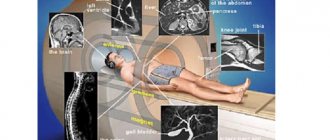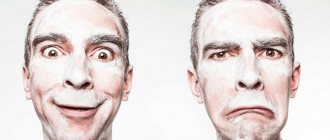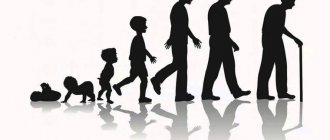Physical self-improvement includes a number of methods and techniques that allow you to form a personality that is harmoniously developed in many respects. Self-education is impossible without willpower, so it is necessary to constantly develop and strengthen this quality, consciously overcoming obstacles that often arise in the process of achieving a goal.
Self-improvement is the basis of a vibrant life
Health is an integral part of a bright, happy life. Illness deprives a person of many joys and limits his capabilities. Willpower helps you set goals and achieve them by breaking them down into smaller tasks.
Physical development involves the following activities:
- General strengthening of the body. It is expected to perform exercises to improve movements, endurance, and increase immunity.
- Preparing young people for military service and future work.
- Fostering respect for various types of physical activity and sports.
- Discovering and developing sports talents.
Physical education classes greatly influence the spiritual development of the individual. This is due to discipline, responsibility, perseverance and other important qualities that must be demonstrated when working on your own body. A physically strong person changes his attitude and behavior in all areas of life. Labor and social activity is increasing, and this is reflected in the economic development of the country.
Cultivating willpower
Physical self-education and self-improvement contributes to the fact that a person’s existing skills, knowledge, and practical abilities begin to expand. But the results will be short-term if there is no subsequent desire for constant self-development.
Personal qualities appear through the drawing and the contour of the body. Training the body leads to mental work that changes a person from the inside. An important stage in the course of physical development is the development of willpower. Often this is a natural process, because by setting goals, a person overcomes the difficulties that arise in the course of achieving what he has planned. Willpower becomes not only a consequence of physical self-education, but also moral, intellectual, emotional, aesthetic, etc.
Inner strength is based on 2 important components - willpower and self-discipline. Every person can master them and develop them, since these internal qualities are not limited by nature. But in order to be successful in this matter, you need to systematically work on yourself.
In order for a person to engage in physical self-improvement, he needs to constantly maintain motivation. In this case, motives can be determined by himself or come from the external environment. A person is pushed to work on himself by the values of the society in which he lives, the desire to gain recognition among certain segments of the population, self-criticism and criticism, which allows him to see his own shortcomings and begin to correct them.
Often, a person is forced to take care of his own body because he understands that he does not meet social or professional requirements. Work on oneself begins where motivation and willpower intersect: having important motives, it will not be difficult for a person to overcome the laziness and apathy that stopped him from self-improvement. Weak motivation or its complete absence will force you to work only on willpower. It is difficult to form useful, healthy habits in such conditions.
Introduction
A healthy lifestyle helps us achieve our goals and objectives, successfully implement plans, cope with difficulties, and, if necessary, even with colossal overloads. Good health, maintained and strengthened by the person himself, will allow him to live a long and joyful life.
Health is an invaluable wealth of each person individually and of the entire society as a whole. When meeting and parting with people close to us, we always wish them good health, because this is the main condition for a full and happy life. In our country, more than 30 million people suffer from ARVI and seasonal viruses every year. The reason for this is that more than 80% of the population has weak immunity. For the immune system to work like a clock, it needs to be supported every day, and not just during flu epidemics! How to recharge your immune system? The answer is simple - lead a healthy lifestyle.
The influence of physical education
Physical culture has a strong influence on personal development. A person gains confidence in his abilities based on the capabilities of the body and spirit that he possesses. Such people know how to overcome difficulties, show courage, patience, and determination. Thanks to physical work on oneself, a person gets rid of bad habits and promotes his intellectual growth.
For a person who regularly engages in physical self-improvement, life seems different. He knows how to take responsibility, is not afraid of problems and looks at life more optimistically. Experts have found that during physical activity, such as running, the body releases the joy hormone endorphin. The state of runners after long races is compared to a state of mild alcohol intoxication.
By working on sports motor skills, a person gains strength and speed. Practical motor skills train endurance, perseverance, and agility. The transfer of theoretical knowledge on physical culture and education develops flexibility of thinking.
Running and its healing effect
“Our body is created for hard work, such as running, and if it is not hopelessly neglected, not swollen with fat, not poisoned by alcohol and nicotine, not weighed down by real and imaginary worries, it will respond to such work with gratitude and pleasant fatigue,” writes A. M. Tchaikovsky [2, p. 107-108].
You need to run either every other day or every day, but no more than 15-20 minutes [2, p. 130]. However, it should be remembered that such a system of exercises is less effective; it is more suitable for maintaining physical fitness, but not for improving it. In any case, when jogging, it is important to avoid lethargy, severe fatigue, as well as a decrease in performance (this means that you have exceeded the limit of your capabilities and the load needs to be reduced), because as A. Lydiard rightly noted:
- Always stay within your limits and never run with someone younger and stronger.
- Train, but don't overexert yourself! Healthy exercise, not overload, strengthens the body.
The main method of training in recreational running is uniform (or uniformly accelerated) running. In this type of training, the runner covers the entire distance at an even pace at a constant speed.
Well-trained runners (who have been training for at least 4-5 years) can use the repetitive running method during training. It consists in the fact that in the second half of the distance the runner makes 2-3 accelerations with a length of 1-2 km.
Beginning runners can alternate between walking and running. The method consists of alternating strictly limited sections of walking and running, for example, 50 m of running and 100 m of walking, then 100 m of running and 100 m of walking [2, p. 130].
The famous American doctor Kenneth Cooper developed a system of health-improving exercises (including running), which he called aerobics (i.e., exercises that help enrich the body with oxygen). K. Cooper developed a whole system of calculations for increasing physical fitness (and with it health). As part of this program, it is necessary to regularly keep a diary, where the pulse rate for 10 or 15 seconds, the number of breaths per minute and some other indicators are recorded. Intermediate results within the framework of this health program should be recorded once a week, these results are recorded within the framework of a point system (at the same time, K. Cooper strongly recommends not chasing points, because this can lead to the opposite effect).
K. Cooper has developed a health running program for different age groups (under 30 years old, 30-39 years old, 40-49 years old, 50-59 years old). Each age group must run 3.2 kilometers (3 times a week) in a limited period of time. So, for the age group 40-49 years old, he recommends running the distance in 34 minutes in the first week (9 points are awarded for this), in the second - in 32 minutes (9 points are also awarded for this), in the third week - in 30 minutes ( 15 points are awarded for this). In a similar way, there is a gradual reduction in the time to cover the distance and the number of points obtained over 14 weeks [2, p. 117-127].
The effect of reducing stress on the body
The development of modern technologies is aimed at facilitating or eliminating physical stress on the human body. The emergence of a large number of transport, mechanization of manual labor. Many athletes are forced to give up such natural things for humans as an elevator or an escalator, preferring to take the stairs. This method of loading can be used by people who do not have time to exercise.
Reducing physical activity on the body leads to weakening of the skeleton and heart muscle. Bones begin to transform, fatty layers appear, and it becomes harder for a person to perform simple actions and movements. The aging process becomes more intense, the body loses resistance to infections, all this greatly affects performance. Neuroses and stress in the absence of physical activity can lead to the development of heart and vascular diseases.
For a long time, it was believed that sports should not be played by people who have health deviations from the norm, for example, myopia, heart disease, etc. However, now experts, on the contrary, point out the great benefits of physical work on oneself for people with various pathologies. But at the same time, the training program for them should only be drawn up by instructors with appropriate medical education.
Features of an unhealthy lifestyle
The working population in Russia is dying out.
Unhealthy lifestyles hold back economic growth. In Russia, four out of ten men aged 15 to 60 die, in Switzerland - less than one. Russians lead unusually unhealthy lifestyles, which means they get sick more often and are less productive. According to the World Bank and the World Health Organization, without preventive measures, economic growth could be seriously jeopardized.
Russians are unhealthy and die early. According to a report prepared by the World Bank in collaboration with the World Health Organization (WHO), statistically, life expectancy in Russia is 66 years, and in Switzerland - 80 years. Russia is not only one of the few countries where life expectancy has fallen, despite positive economic performance in recent years, but it also appears to be a country where there is a large difference in life expectancy between men and women. So, if in 2003 women lived on average up to 72 years, then men only lived up to 58 years.
It is not just young people or old people who die too early (due to poor health care, for example). In Russia, people of the most working age die early or get sick often. The probability of death for a man aged 15 to 60 years in Russia is 42.2%, and in Switzerland - 9.2%.
Diseases of the cardiovascular system and accidents. The reason for such a high mortality rate among Russians, according to a study by the World Bank and WHO, is primarily the unusually high likelihood of cardiovascular diseases and accidents. Heart failure or cerebral hemorrhage is the cause of 52% of deaths in Russia. Citizens aged 15 to 64 are almost three times more likely to contract non-communicable diseases than in 15 EU countries. Almost five times more people become victims of accidents.
An analysis of the possible reasons for this high mortality rate points to unhealthy lifestyle as a major factor. Russian men, on average, drink and smoke more, do not watch their diet and do not exercise. The main reason for the high mortality rate is widespread alcoholism. Moreover, by their own admission, more than 40% of men from the poorest quarter of the population drink alcohol almost every day. There are an unusually high number of accidents on the roads, and they are often alcohol-related. Alcohol use by victims or perpetrators is responsible for approximately one-third of all homicides.
If Russians led the same healthy lifestyle as in 15 EU countries, the population of Russia, according to the World Bank and WSO, would be not 143, but 160 million people. If this trend continues, Russia's population will decline by a third in the next fifty years. It is estimated that the Russian budget is losing 6% of revenue as citizens fall ill more often than their European counterparts. If health levels could be gradually raised to EU 15 standards, average per capita income could increase by 22% compared to today. That's why Mark Suhrke of the WHO and Patricio Marques of the World Bank believe that Russia, which aims to catch up with developed countries through sustained economic growth, will find it difficult to do so without additional efforts in the health sector. First of all, a prevention and information campaign is needed. Ruslan Khalfin from the Russian Ministry of Health emphasized that the problem is clear, and similar campaigns are planned in principle, but the ministry hopes for foreign support for this.
Main stages of self-education
Before you begin self-improvement, you need to conduct a thorough self-analysis. It consists of the following steps:
- assessment of one’s own capabilities in the field of personal and physical characteristics;
- identifying your strengths and weaknesses;
- development of a program to overcome negative qualities.
Self-analysis should be based on introspection, thanks to which one can evaluate the actions taken. You cannot engage in self-deception; you must maintain maximum impartiality. For example, if a training session was postponed, you need to find out the reason why this was done. If this is an illness, then work should continue as before. If the reason is laziness, you should increase motivation, which always helps to overcome this negative quality and become a preventive measure for its subsequent manifestations.
An important component is critical self-assessment. It is most difficult for teenagers to demonstrate this, since they often suffer from low self-esteem, which detracts from any achievements. Therefore, adults should participate in the lives of people in puberty.
Physical work on yourself consists of 2 stages. The first is based on making a conscious decision to work on yourself. The second involves developing a plan that includes methods and means by which self-improvement will be carried out. Planning must include actions that occur at certain time intervals.
The goals that are determined by a person must correspond to his capabilities. A person who has recently started running will not be able to cover long distances. In addition, this type of load can harm his body or deprive him of the desire to be physically active for a long time.
The third stage is the implementation of the assigned tasks in practice. If laziness gets in the way, in addition to motivation, you can use self-hypnosis or self-order. It is useful to keep a success diary in which you need to record all the achievements, even small ones, that a person has.
Physical self-education and criteria for the effectiveness of a healthy lifestyle
The lifestyle of a modern student is not always characterized by orderliness and organization. Naturally, this is reflected in such important components as untimely eating, systematic lack of sleep, little time spent in the fresh air, insufficient physical activity, lack of hardening procedures, performing independent study work during the time intended for sleep, smoking, alcohol abuse, etc. . Accumulating throughout the academic year, the negative consequences of this lifestyle of students are most clearly manifested by the time it ends. And since these processes are observed during 5 years of study, they have a significant impact on the health of students. One of the main elements of a student’s health is the physical component, which is measured by physical development and physical preparedness, physical fitness and fitness, physical activity and functional readiness. Therefore, physical self-education is of great importance for the formation of a healthy image and sports lifestyle of a student. Physical self-education is understood as a process of purposeful, conscious, systematic work on oneself, focused on the formation of the individual’s physical culture. It includes a set of techniques and activities that determine and regulate the student’s emotionally charged, effective position in relation to his health. The main motives for physical self-education are: the requirements of social life and culture, the desire to gain recognition in the team, the awareness of the inconsistency of one’s own strengths with the requirements of social and professional activity.
The process of physical self-education of a student includes three stages.
First stage
associated with self-knowledge of one’s own personality, highlighting its positive mental and physical qualities, as well as negative manifestations that need to be overcome. Methods of self-knowledge include introspection, introspection, and self-esteem. The first stage ends with the decision to work on oneself.
At the second stage
Based on self-characteristics, the goal, objectives and program of self-education are determined. The goal can be general in nature and set for a long period of time. Objectives may be: maintaining a healthy lifestyle and sports lifestyle; strengthening and maintaining health; formation of moral and volitional qualities of the individual; mastering the basics of physical self-education methods, improving physical development. The overall student health program should take into account living conditions, the characteristics of the individual himself and his needs. Based on the program, a student’s personal plan for physical self-education is formed.
Third stage
physical self-education is directly related to its practical implementation. It is based on the use of methods of influencing oneself for the purpose of self-change. Self-influence methods aimed at improving a student’s personality include self-order, self-hypnosis, self-persuasion, self-exercise, self-criticism, self-control, and self-report. An important factor in promoting a healthy lifestyle is introducing students to physical exercise. Along with the widespread development and further improvement of organizational forms of health-improving physical culture, independent physical education classes are of decisive importance. The main forms of such activities include dosed walking, recreational running, swimming, training walking on the steps of stairs, exercises on machines, sports and outdoor games, and cycling.
Each person’s path to a healthy lifestyle is marked by its own characteristics. This circumstance is not of fundamental importance, since the final result is important.
The effectiveness of a healthy lifestyle can be determined by a number of biosocial criteria, including:
— assessment of morphofunctional health indicators: level of physical development, level of physical fitness, level of human adaptive capabilities;
— assessment of the state of immunity: the number of colds and infectious diseases during a certain period;
— assessment of adaptation to socio-economic living conditions (taking into account the effectiveness of professional activity, the success of the activity and its “physiological value” and psychophysiological characteristics); activity in fulfilling family and household responsibilities; breadth and manifestation of social and personal interests;
— assessment of the level of valeological literacy, including: the degree of formation of an attitude towards a healthy lifestyle (psychological aspect); level of valeological knowledge (pedagogical aspect); level of mastery of practical knowledge and skills related to maintaining and promoting health (medical-physiological and psychological-pedagogical aspects); the ability to independently build an individual health trajectory and a healthy lifestyle program.
Topic No. 7. Features of using physical education means to optimize performance
7.1. Psychophysiological characteristics of a student’s educational work, dynamics of his performance during the academic year
The dynamics of the educational process with its uneven distribution of loads and intensification during the examination session is a kind of test for the students’ bodies (T.G. Savkiva, 1995). There is a decrease in functional resistance to physical and psycho-emotional stress, the negative impact of hypodynamics, violations of work and rest, sleep and nutrition, and intoxication of the body due to bad habits increases; a state of general fatigue arises, turning into overfatigue.
Psychophysiological characteristics of work
- a related characteristic of changes in the state of psychophysical and physiological systems and functions of the body under the influence of certain work activities.
Performance
— a person’s potential ability to perform purposeful, motivated activities at a given level of efficiency for a certain time. Depends on the external conditions of activity and the psychophysiological reserves of a person. There are maximum, optimal and reduced performance.
Fatigue
- temporary objective decrease in performance under the influence of prolonged exposure to stress on the human body. Accompanied by a loss of interest in work, a predominance of motivation to stop working, and negative emotional reactions. The appearance of fatigue depends on the type of load, the location of its impact, and the time required for recovery. The following types of fatigue are distinguished: physical and mental, emotional, sensory, as well as acute and chronic, local and general.
Overwork
— accumulation of fatigue due to irrational work and rest regimes in the absence of timely recovery. It entails a decrease in performance and productivity, the appearance of irritability, headaches, sleep disturbances, etc. Fatigue can be incipient, mild, severe, or severe.
Fatigue
— a complex of subjective sensations accompanying the development of a state of fatigue. Characterized by a feeling of weakness, lethargy, physiological discomfort, disruption of mental processes (memory, attention, perception, thinking, etc.)
Well-being
- a subjective feeling of the internal state of physiological and psychological comfort or discomfort.
Objective and subjective factors of learning and the reaction of students’ bodies to them.
The most important factor in ensuring the high quality of professional training of university graduates is their active educational, labor and cognitive activities. This activity is a complex process in the conditions of objectively existing contradictions, which include (M.M. Shchepotova, 1999):
— contradictions between the large volume of educational and scientific information and the lack of time to master it;
— the contradiction between the objectively ongoing gradual, long-term process of developing the social maturity of the future specialist and the desire to assert oneself and prove oneself as quickly as possible;
— contradictions between the desire for independence in the selection of knowledge, taking into account personal interests.
These contradictions create high neuro-emotional tension, which negatively affects the health and, especially, the psychophysical state of students.
Taking into account and understanding by students this kind of contradictions is necessary for the normal implementation of their educational activities.
Student age is characterized by intensive work on the formation of one’s personality and the development of a behavioral style. This is a time for young people to search for answers to a variety of moral, ethical, aesthetic, scientific, general cultural, political and other questions.
Student age is also the final stage of progressive age-related development of the psychophysiological and motor capabilities of their body. Young people during this period have great opportunities for intense educational work and social and political activities. The difficulties of studying at a university are associated not only with the need for creative assimilation of a large amount of knowledge, the development of skills and abilities necessary for a future profession, and their practical application. These difficulties are obvious. But there are also hidden difficulties that sometimes have a very significant impact on the studies and psycho-emotional state of students.
These include a number of circumstances in student life that seem insignificant when taken individually, but collectively give a negative effect, which can be called students’ inability to study at a university. Among the reasons for this phenomenon, the most significant are the following:
- teaching methods and organization that are sharply different from school ones, requiring a significant increase in independence in mastering educational material;
- lack of well-established interpersonal relationships, and therefore group contact, which is typical for any emerging team;
- breaking the old life stereotype that has developed over the years of studying at school or at work and forming a new one - “university”;
— new concerns accompanying admission to a university, which more often arise among students living in a dormitory (self-care, independent budgeting, planning and organizing their study and free time, etc.).
Junior year students find themselves especially in a difficult situation. On the one hand, they must immediately engage in intense work that requires the use of all strengths and abilities; on the other hand, they must overcome the novelty of the conditions of educational work, which causes significant expenditure of the body’s strength. The inclusion of students in a new system of life may be accompanied by nervous tension, excessive irritability, lethargy, decreased volitional activity, anxiety, etc. The occurring phenomena are associated with difficulties in the process of their adaptation.
For the development of a specialist’s personality, professional, socio-psychological and didactic adaptation are of particular importance. Let us take a closer look at these conventionally identified types of adaptation.
Professional adaptation
means identification (identification) of oneself with the chosen profession, with the social role that will be performed after graduation. This is the identification of personal qualities with the requirements of the profession and an actively positive attitude towards the chosen specialty. Of primary importance in this adaptation is the formation of the professional orientation of the individual. Upon completion, the student should receive a holistic understanding of the activity for which he is preparing. He must develop a professional ideal as a guiding basis for his activities.
Socio-psychological adaptation
means integration of the individual with the student environment, acceptance of its values, norms, standards of behavior, etc. This leaves an imprint on the personality and determines a change in the direction of needs. The process of internal reorientation of the individual is influenced by factors of interpersonal relationships, during which attitudes are formed that satisfy the student’s personal status and form the level of his aspirations. As interpersonal relationships strengthen, the student becomes involved in the activities of the study group.
Didactic adaptation
involves increasing the level of mental and intellectual readiness of students for the specifics of university education. A low level of this readiness when entering a university leads to mental fatigue, weakening of memory, thinking, etc. Higher school requires a new type of educational behavior, more complex forms of mental activity. This idea is confirmed by data from a survey of first-year students, characterizing the main reasons causing difficulties in the transition to university forms of education. Among these reasons, the following were noted: organization of independent work - 31% of surveyed students; change in the performance monitoring system - 23.8%; change in the survey system - 16.4%; the need to take notes on lectures - 7.6%; the complexity of laboratory and practical classes is 6.9% (Vilensky M. Ya., 1993).
Objective and subjective factors also affect the psychophysical state of students.
Objective factors include age, gender, health status, amount of academic workload, nature and duration of rest, etc.
Subjective factors include motivation to study, level of knowledge, ability to adapt to new learning conditions at a university, psychophysical capabilities, neuropsychic stability, personal qualities (character, temperament, communication skills, etc.), performance, fatigue, etc.
A serious test for the body is the information overload of students that occurs when studying numerous academic disciplines, the scientific level and information volume of which is constantly increasing.
A critical and complex factor in students' overstrain is also the examination period - one of the variants of a stressful situation, which occurs in most cases under conditions of time shortage and is characterized by increased responsibility with elements of uncertainty.
The negative impact on the body is enhanced by the combined influence of several risk factors, when they act simultaneously and become chronic.
Dynamics of student performance during the academic year
Performance (M.Ya. Vilensky, 1977) is defined as a person’s ability to perform specific mental activities within given time limits and efficiency parameters.
The basis of performance is made up of special knowledge, abilities, skills, as well as certain psychophysical characteristics
:
- perception (perception is a psychological term meaning perception, direct reflection of objective reality by the senses) memory, attention, thinking, etc.;
— physiological — the state of the cardiovascular, respiratory, muscular, endocrine and other systems;
— physical — level of development of endurance, strength, speed of movement, etc.; a set of special qualities required in a specific activity. Performance depends on the student’s capabilities, adequate to the level of motivation and the goal.
At each moment, performance is determined by the influence of various external and internal factors, not only individually, but also in their combination.
Performance in educational activities to a certain extent depends on the student’s personality traits, typological features of his nervous system, and temperament. Along with this, it is influenced by the novelty of the work being performed, interest in it, determination to complete a certain specific task, information and evaluation of results as the work progresses, perseverance and accuracy.
Psychophysiological foundations.
Research (Stepanenkova E. Ya., 2006) has established that the daily dynamics of a person’s performance is largely determined by the periodicity of his physiological processes under the influence of exogenous (associated with changes in the external environment) and endogenous - internal (rhythm and heart rate, breathing rhythm, changes in blood pressure and etc.) factors. Fluctuations in performance during the day correspond to the biological rhythms of the body. High performance in any type of activity is ensured only if the life (working) rhythm is correctly consistent with the biological rhythms of its psychophysiological functions characteristic of the body.
There are students with stable stereotypy and a sequence of changes in performance (rhythmics) - they are the majority, and students with an unstable sequence (arrhythmics). Depending on the time of working capacity, rhythms are divided into morning (“larks”) and evening (“owls”) types.
Students who are “larks” get up early, are alert and cheerful in the morning; high spirits persist in the morning and afternoon. They are most productive from 9 a.m. to 2 p.m. In the evening they get tired early. These are the students most adapted to the existing learning regime. Almost their biological rhythm coincides with the social rhythm of a full-time university.
Students - “night owls” are most productive from 18 to 24 hours. They go to bed late, most often do not get enough sleep, and are often late for classes; in the first half of the day they are slow. They are in the least favorable conditions, studying full-time at a university.
Obviously, it is advisable to use the period of decline in performance for both types of students for rest. For night owls, it is advisable to organize consultations and classes on the most difficult sections of the programs at 18:00.
Arrhythmics occupy an intermediate position between the two groups considered, but still they are closer to representatives of the morning type.
Under the influence of educational and work activities, students’ performance undergoes changes that are clearly observed during the day, week, half-year (semester), and academic year.
School day
Students, as a rule, do not immediately begin with high productivity of academic work. After the bell rings, they cannot immediately concentrate and actively participate in classes. It takes 10-20, and sometimes more than 30 minutes, before performance reaches its optimal level. This (first) period of working in is characterized by a gradual increase in performance with certain fluctuations.
The second period of optimal (sustainable) performance lasts 1.5-3 hours, during which the functional state of students is characterized by changes in body functions that are adequate to the educational activity that they perform.
The third period is the period of full compensation, characterized by the appearance of initial signs of fatigue, which are compensated only by volitional effort and positive motivation.
In the fourth period, unstable compensation sets in, fatigue increases, fluctuations in volitional effort are observed, as well as instability in the productivity of educational activities.
In the fifth period, a progressive decrease in performance begins, which, before the end of work, can be replaced by a short-term increase due to the mobilization of the body's reserves (final impulse).
With further continuation of work, in the sixth period, there is a sharp decrease in its productivity as a result of a decrease in working capacity and the extinction of the working dominant (dominant (lat.) - a temporarily dominant focus of excitation in the central nervous system, which has increased excitability and can have an inhibitory effect on the activity of other centers of the brain ).
In addition to classroom studies, the students' school day includes self-study. The presence of a second increase in performance during self-training is explained not only by the daily rhythm, but mainly by the psychological attitude towards completing educational tasks.
The variability of changes in individual aspects of performance is also due to the fact that the educational activity of students is characterized by constant switching of various types of mental activity (lectures, seminars, laboratory classes, etc.).
School week.
The dynamics of mental performance in the weekly educational cycle is characterized by a period of development at the beginning (Monday, Tuesday), stable performance in the middle (Wednesday - Thursday) and a decrease in the last days of the week. In some cases, it rises on Saturday, which is associated with the phenomenon of the “final rush.”
A typical performance curve may change in the presence of a factor of neuro-emotional stress that accompanies work on different days of the week. Such factors may be completing a test, participating in a colloquium, preparing and passing a test, etc.
Academic semester and academic year
. At the beginning of the school year, a period of incubation is observed for 3-3.5 weeks, accompanied by a gradual increase in the level of performance. Then, over the course of 2-2.5 months (mid-semester), a period of stable performance begins. At the end of the semester, when students are preparing and taking tests, performance begins to decline. During the exam period, the decline in the performance curve intensifies. During the winter holidays, performance is restored to its original level, and if the rest is accompanied by the active use of physical culture and sports, the phenomenon of its increase is observed.
The beginning of the second half of the year is also accompanied by a working-in period, the duration of which is reduced compared to the first half of the year to 1.5-2 weeks. Further changes in performance from the second half of February to the beginning of April are characterized by a stable level. Moreover, this level may be higher than in the first half of the year. In April, there are signs of decreased performance due to fatigue. During the test session and during the exam period, the decrease in performance is more pronounced than in the first half of the year. The recovery process is characterized by a slower development, due to the significant depth of fatigue.
7.2. The influence of stress factors on the psychophysical state of students, criteria for neuro-emotional and psychophysical fatigue
One of the reports of the Expert Committee of the World Health Organization indicates that the increase in the number of diseases of the cardiovascular system and functional disorders of other organs in students is a consequence of the increasing intensification of mental work and the increase in neuro-emotional overload (Bryers S., 2009).
Risk factors that contribute to the occurrence of cardiovascular, nervous and mental diseases also include social changes, life difficulties, misunderstanding by loved ones, impatience, a constant feeling of lack of time, rushed eating, motivational conflict, intimate-personal conflict, change of job, profession and so on.
Particularly intense mental work affects the state of the central nervous system and the course of mental processes. A large load on the central nervous system and its higher department - the cerebral cortex - manifests itself mainly in such mental processes as attention, perception, thinking, analysis, memory, emotions. Metabolic processes occur in the brain with the greatest intensity; it makes up 2-2.5% of the total body weight, but consumes 15-20% of the oxygen entering the body, and for the normal manifestation of its functions, the brain must have a high level of circulatory stability.
However, many factors accompanying the mental activity of students reduce the efficiency of blood circulation in the brain and worsen its blood supply. These include: prolonged sitting at a table, mental stress, negative emotions, hard work under time pressure, high responsibility for the results of knowledge acquisition, etc.
Prolonged intense mental work also reduces the body’s ability to continue it qualitatively, and fatigue sets in as its normal reaction. Fatigue can cause a state of fatigue that appears before its onset and is a subjective feeling of a person. Fatigue increases with a lack of understanding of the meaning of the work being performed and dissatisfaction with its results. On the contrary, increased interest and successful completion of work reduces the feeling of fatigue. Fatigue is not always detected in the simultaneous weakening of all aspects of a student’s activity. A decrease in performance in one type of educational work may be accompanied by the preservation of its effectiveness in another. So, for example, once you are tired of performing computational operations, you can successfully engage in reading. Such fatigue, partial in nature, is characteristic of certain types of mental work and is a reversible process. Fatigue is relieved by timely effective rest and a change in type of activity, especially those related to physical activity (MA).
The degree of development of fatigue can be determined by some external signs (Table 7). But there may also be a state of general fatigue in which, for example, neither doing mathematics, nor reading literature, nor even a simple conversation are possible - you just want to sleep uncontrollably. In such conditions, increasing mental performance due to functional overstrain is very dangerous for the body of students and, as a rule, causes long-term adverse consequences.
With systematic overstrain of the nervous system, overwork occurs, which is characterized by a feeling of fatigue before starting work, lack of interest in work, apathy, increased irritability, decreased appetite, dizziness and headache.
Table 7.
External signs of fatigue in the process of mental work of students (S.A. Kosilov, 1979)
| Observation object | Fatigue | ||
| Minor | Significant | Sharp | |
| Attention | Rare distractions | Absent-minded, frequent distractions | Weakened; there are no reactions to new stimuli (verbal instructions) |
| Pose | Unsteady, stretching legs and straightening torso | Frequent changes of postures, turning the head in different directions, leaning one's elbows, supporting the head with hands | The desire to put your head on the table, stretch out, lean back in your chair |
| Movements | Accurate | Uncertain, slow | Fidgety movements of the hands and fingers (deterioration of handwriting) |
| Interest in new material | Lively interest, asking questions | Low interest, no questions | Complete lack of interest, apathy |
Objective signs of overwork are: loss of body weight, dyspeptic disorders, increased tendon reflexes, lability of heart rate and blood pressure, sweating, pronounced dermographism, decreased body resistance to infections, the occurrence of diseases, etc.
An assessment of the degree of fatigue is presented in table. 8.
Table 8.
Brief description of the degrees of overfatigue (according to K. K. Platonov, 1980)
| Symptom | Degree of fatigue | |||
| 1-beginning | II- lung | III-pronounced | IV-severe | |
| Decreased performance | Small | Noticeable | Expressed | Sharp |
| The appearance of previously absent fatigue during mental stress | Under increased load | Under normal load | With light load | No visible load |
| Compensation for decreased performance by volitional means | Not required | Fully | Not completely | Slightly |
| Emotional shifts | Temporary decrease in interest in work | Mood instability at times | Irritability | Depression, severe irritability |
| Sleep disorders | Difficulty falling asleep and waking up | It's harder to fall asleep and wake up | Daytime sleepiness | Insomnia |
| Decreased mental performance | No | Difficulty concentrating | Forgetful at times | Noticeable weakening of attention and memory |
| Vegetative shifts | Sometimes heaviness in the head | Often heaviness in the head | Occasional headaches, loss of appetite | Frequent headaches, loss of appetite |
| Preventive actions | Organization of recreation, physical education, cultural entertainment | Recreation, physical education | Organized holidays, Providing holidays | Treatment |
Thus, mental activity associated with mental stress places high demands on the body of students and, under certain unfavorable conditions, can cause serious illnesses.
Healthy lifestyle
It is impossible to engage in physical improvement if a healthy lifestyle is not formed. It includes:
- Daily regime. A person should get 8 hours of sleep, get up and go to bed at the same time. It is necessary to take time to rest every day.
- Complete nutrition. Diet is not the best option for a person involved in sports. It is necessary to include in the diet those foods that satisfy the daily need for energy, vitamins and microelements. The menu should be balanced and include natural products.
- Hardening. The process of strengthening the body should be carried out gradually using different methods.
Basics of physical self-improvement
Self-healing and self-improvement have some principles, adhering to which a person can achieve greater success during training, eliminating overwork or other negative consequences. You need to approach work on yourself consciously, consistently, adhere to stages, regularity and individualization.
Physical self-education includes a large complex of means that contribute to the education of a healthy person who can easily adapt to the changing conditions of modern life. The most common means include daily routine, hygiene, active games, movements, exercises of various types, etc.
Experts distinguish 5 types of physical culture:
- Basic. Thanks to it, a person develops basic vital physical properties.
- Sport. Based on competition.
- Adaptive and therapeutic. Used to restore the body after injury and illness.
- Hygienic. Includes exercises, gymnastics, jogging, visiting the pool and other types of activity that eliminate much stress on the body.
- Recreational. Involves active recreation in the form of hiking.
What to do to change the situation
I believe that first of all you need to start with your state of mind. You need to be happy. Happiness is not a luxury or a privilege; it's a necessity. Happiness is a state of mind that is necessary on the path to a healthy lifestyle. So, as they say, if you want to be happy, be happy!
The first thing to do is start the day with a smile! Just wake up in the morning, wash your face, look at yourself in the mirror and smile. Even if the smile is insincere, it’s okay. You need to do this every day, and one day you will wake up and feel truly happy.
Secondly, the most important thing is to love yourself! Without self-love, starting a healthy life is much more difficult. When you fall in love with yourself, you will begin to feel differently about yourself and your body. And those around you will love you as much as you love yourself. This is pure psychology. Everything that happens to us is our own fault, and only we ourselves can change our lives for the better.
And thirdly, get rid of everything, absolutely all negative thoughts from your head. Just stop thinking about the bad, start thinking about the good. And when moments of hatred and anger come, write it all down on a piece of paper. Then read it and correct all the words of hate to the opposite (for example: instead of hate - I love; I'm fat - I'm thin, etc.), write it down on a new piece of paper and burn the negative sheet and throw it in the trash. You will see, this will definitely help you. Read to yourself a sheet of paper with positive words and expressions more often - it will be like auto-training for yourself.
And one more very important thing, try to get rid of the use of the particle NOT in your speech. As you know, the human brain does not perceive particles. That is, if you say I won't be lazy anymore!, your brain will perceive this as I will be lazier!. It is better to say in this case: I am a hard worker! And always in the present tense.
Healthy sleep and proper nutrition.
Sleep is a certain physiological state necessary for a person. And healthy sleep is the key to health and success in life. Lack of healthy and sound sleep can lead to disability and weight gain.
A full night's sleep requires 6 to 10 hours. You need to choose the number of hours of sleep your body needs. How to do it? Sleep for 6 hours for several days in a row, then for 7 hours and so on... At the same time, when you wake up, pay attention to your physical and mental state. Is it easy for you to fall asleep, wake up, do you sleep soundly?
In general, healthy and sound sleep depends on many factors, ranging from the energy of the place where you sleep to the events that happened to you during the day. But it's impossible to take into account everything at once, so you can start by determining how many hours you need to sleep, and when to go to bed and when to get up. By the way, it is convenient for each person to go to bed and wake up at different times, but it is best to go to bed from 21 to 23 o'clock, and it is better to get up from 5 to 8 am.. And most importantly, you need to sleep from 2 to 4 am. All this is connected with human biorhythms. This will make your body feel better.
As for proper nutrition, this is a very broad issue today. Having studied it comprehensively, I highlighted several points:
- Firstly, there must be a diet. Those. you need to eat at least 3 times a day, and preferably five (breakfast, lunch (or snack), lunch, afternoon snack, dinner, and before bed, fruits, vegetables or dairy products). You need to eat food at a strictly defined time;
- secondly, simply reduce your consumption of flour, sweets, fatty foods, fast food products and semi-finished products;
- thirdly, you need to drink water. Two factors are important here:
- Each person needs their own amount of water, it is calculated using the formula: 30-35 grams of water per 1 kg of person’s weight. Those. if I weigh 54 kg, I need to drink per day: 54 kg * 35 g = 1 liter 890 g of water;
- if you want to lose weight, drink before meals; gain weight - after eating. Well, if you want to maintain weight, drink with meals;
- fourth, stop drinking carbonated drinks and alcohol;
- fifthly, eat less fried food, it’s better to throw away all the frying pans (there will be less temptation).
These are the basic and most important principles of proper nutrition. Agree, nothing complicated. Starting with these five points, you will see for yourself how your body and skin will change; your body will definitely reward you with a surge of vigor and strength. And after that, you will definitely want to move on to the next points of a healthy lifestyle - the correct daily routine and physical activity.
A proper daily routine is one of the conditions for a healthy lifestyle. A daily routine is a strictly observed order of work, rest, sleep and nutrition. We have already decided on our sleep and nutrition schedule. All that remains is to set a time for work, physical activity and always rest.
Taking into account human biorhythms, the optimal time for work is from 10 to 18 hours. In this case, the greatest performance occurs from 10 to 12 hours, then performance gradually decreases. From 13 to 14 you need to take a short break, have lunch or just relax.
As for physical activity, the best time to play sports is from 16:00 to 19:00. You can (and should) exercise in the morning after waking up, but it's better to do a simple exercise in the morning to warm up and finally wake up. It is better to engage in active sports in the evening. In the evening, muscle strength is greater than in the morning.
The body needs to develop a correct daily routine and try to stick to it. And most importantly, listen to your body and give it rest in a timely manner. Or perhaps you will create your own individual daily routine.
Over time, we settled on physical activity. Now you need to think about what sport to do.
It is better, of course, to turn to a professional. But not everyone has the opportunity! You can choose the exercises yourself. Start with light exercise in the morning. And gradually add exercises that you think your body needs. At the same time, watch your body; if doing something is very difficult, then it is better to replace this exercise with another. After you have collected the entire set of necessary exercises, divide them into: morning exercises and a set of exercises for your figure. You can do everything in the morning, or you can do a set of exercises for your figure in the evening, as you like. The main thing is to do it regularly and give it your all. It is more useful to exercise for 15-20 minutes every day than 2 times a week for 2 hours.
As a supplement to the exercises, you can use: a hula hoop (an ordinary one, but an iron one), an expander, a trampoline and a jump rope. This is exactly the sports equipment that will help you train your body as much as possible and correct deficiencies, if any.
If you don't like any exercise, you can choose any other physical activity. This could be: dancing, yoga, running, simple exercise equipment, skating, cycling and much more. The most important thing is that you enjoy this activity. And then it will be easier to study. Whenever you engage in physical activity, remember: movement is life! And living an active life is much better than living a passive life!
Personal hygiene. This is the most pleasant part (who doesn’t want to look beautiful and well-groomed).
To start, just take a bath. You can relax with aromatic oils and scrubs, foam, and salt. Or you can simply soak in the warm water. And when you go outside, remember this feeling of freshness and cleanliness. Now you are ready to take care of yourself regularly.
Take a shower 2 times a day, morning and evening (preferably with a gel that does not violate the protective film of the skin). When taking a shower, it is very useful to rub your body with a shaggy mitten, washcloth, or brush, starting from your toes and moving up your body in a circular motion.
1-2 times a week you need to take a warm (37-38 degrees) bath with sea salt, herbal decoctions, aromatic oils or other skin-healthy products.
Gentle exfoliation is required for the entire body 1-2 times a week - it removes the top layer of dead cells, thereby stimulating the process of cellular renewal, improves the penetration of moisturizers and nutrients into the skin, making it smooth.
Appropriate moisturizing and nourishing products should be applied to the skin every time after showering, bathing and exfoliating. The care product is selected depending on the skin type.
These are the most basic rules of a healthy lifestyle. It won't be difficult to stick to them. The main thing is to start and don’t relax and don’t stop! You just need to rebuild while still moving forward. Start with positive auto-training and gradually move on to the following rules of a healthy lifestyle. You'll see, you'll succeed!
Results of good physical fitness
A person who has good physical fitness increases his self-esteem, improves his psycho-emotional state, and changes his thinking. Regular exercise has a beneficial effect on the body, as blood circulation improves, which optimizes the functioning of internal organs by saturating them with oxygen. Physical activity makes a person more stress-resistant.
Participation in team games and communication with like-minded people contributes to a deeper process of socialization, so it is useful for insecure, doubtful people who have difficulty communicating with others to engage in physical self-improvement.











